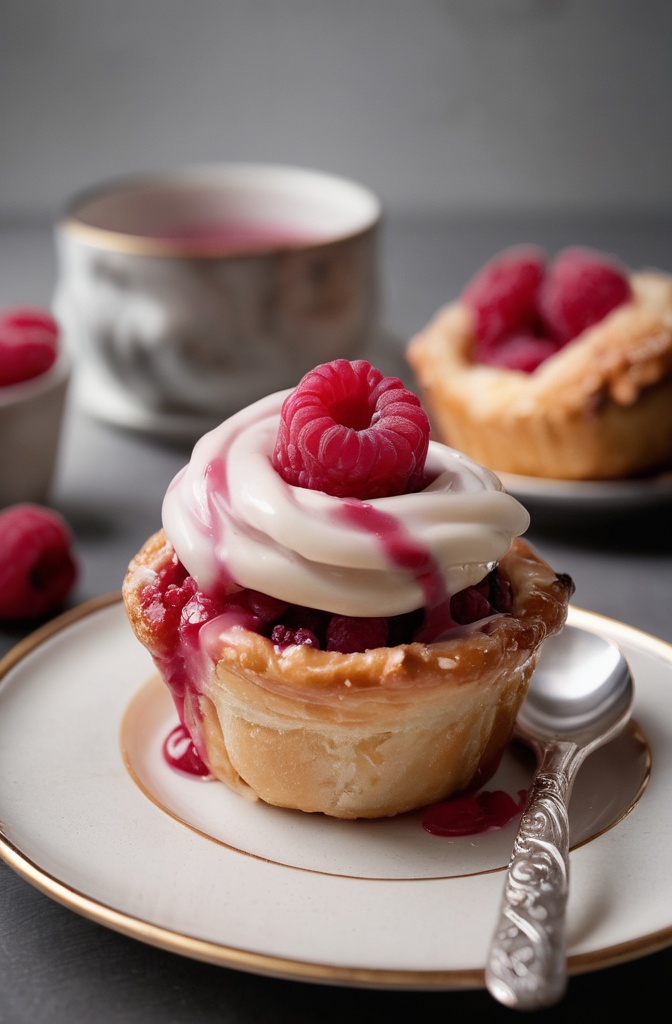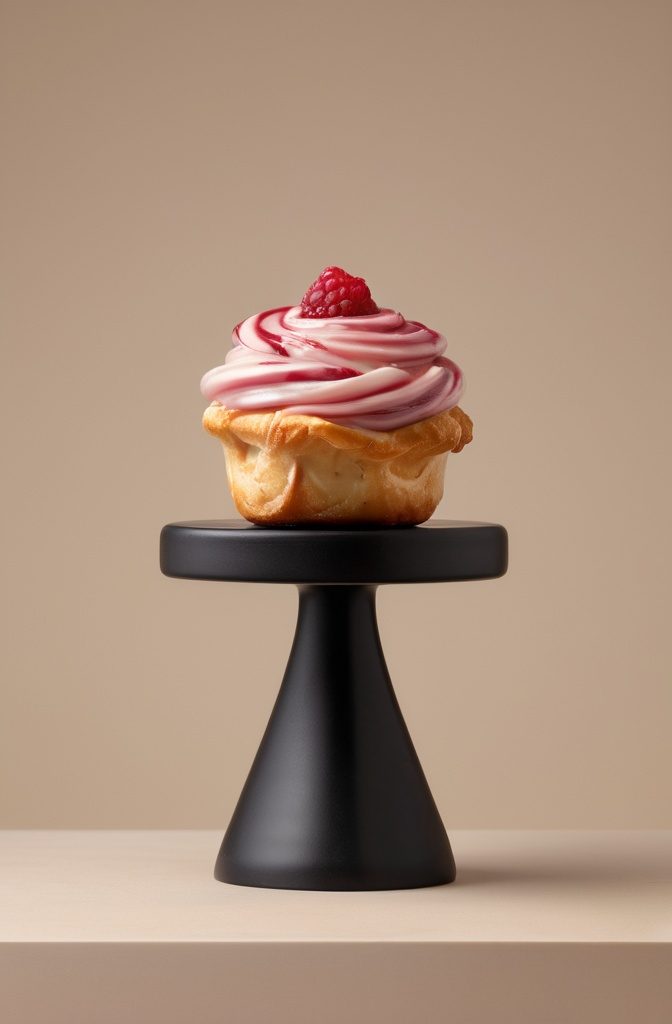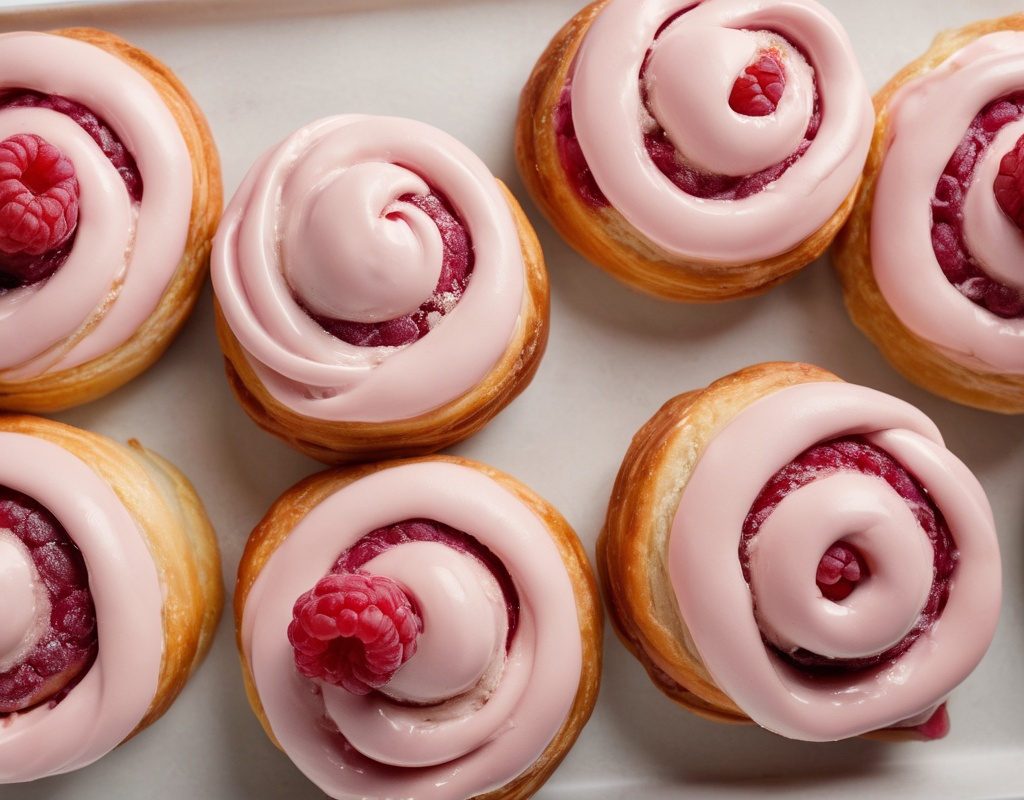The pastry world don’t sit still for long, and cruffins—those flaky, swirled darlings born of a wild night between croissants and muffins—have found their newest twist: raspberry cream cheese. You’re looking at a pastry that’s loud, rich, cheeky and strangely sophisticated. This isn’t just a trend. It’s an evolution of form, flavor, and finesse. Raspberry cream cheese cruffins are pushing boundaries, and if you’re a pastry pro or a curious chef, you’ll want to pay close attention.
This article dives deep into the anatomy, technique, and business value of crafting perfect raspberry cream cheese cruffins. Not just how—but why they work. Let’s tear this thing open and get into the gooey center.
What Exactly Is a Cruffin?
A cruffin is a laminated dough, much like a croissant, baked in a muffin tin. What you get is a tall, golden pastry that peels like a croissant but holds its shape like a muffin. First sighted at Mr. Holmes Bakehouse in San Francisco in 2013, cruffins blew up fast—Instagram did half the marketing.
Now, ten years on, we’re seeing more sophisticated iterations. The raspberry cream cheese version hits all the right notes—tangy, sweet, creamy, buttery—and keeps customers coming back, even when it’s priced north of $6 a pop.
Why Raspberry and Cream Cheese?
Simple: contrast. Raspberry’s tartness slaps up against the sweet, rich cheese filling. There’s a reason cheesecake is still king—it’s that combo. In laminated dough, you’ve already got a big buttery flavor base, so adding something bright and acidic cuts through the fat like a knife. Literally.
A 2022 report by Datassential shows that raspberry-flavored baked goods saw a 9% menu growth year-over-year. Raspberry’s having a quiet moment. Cream cheese, meanwhile, is always dependable, with over 80% brand recognition among U.S. consumers. You mix the two and suddenly you’re not just selling a pastry—you’re selling familiarity with flair.
Dough: The Devil’s in the Lamination
If you’re using premade croissant dough, cool—do you. But if you’re serious about layering flavor and texture from the ground up, you’re starting with a détrempe and a beurrage, and you’re folding like your rent depends on it.
Here’s where most folks mess up: under-proofing. Cruffins need time to rise, and the muffin tin format makes bakers want to rush it. Don’t. A good cruffin gets a slow, steady proof, ideally in a retarder overnight. You want those layers to expand, not explode. Think steam, not burst.
Also? Use European-style butter. 82% fat minimum. Your laminated dough will thank you for it. American butter’s too watery, and it’ll wreck your layer integrity.
The Fill: Not Just a Dollop
Most amateurs pipe the cream cheese and raspberry jam after baking. That’s fine for speed. But flavor-wise? Nah. You want that filling to marry into the pastry during the bake. That means laminating with restraint, shaping tightly, and adding a restrained ribbon of cream cheese—tempered and stabilized with a bit of cornstarch or flour, or it’ll weep out like a breakup text.
Raspberry can be a chunky reduction or a seedless gel. Just don’t use straight jam from a jar—high pectin jams seize under high heat and go weird. Use fresh berries when you can; if you can’t, go frozen and reduce with lemon zest and a splash of Chambord to elevate the whole experience.

Shaping Technique That Matters
This ain’t just “roll and stuff.” You laminate, cut long strips, spread the filling, then roll like a snail before dropping it into the tin. Tight but not strangled. Leave room for the dough to grow. A good roll should spiral like a galaxy—not collapse like a failed soufflé.
And don’t forget the orientation. Horizontal striping gives you visual flair when baked. That’s what makes people pull out their phones. People eat with their eyes, yeah, but they buy with their cameras.
The Bake: Timing and Temp Tricks
Most cruffins bake best around 375°F (190°C), but oven calibration is everything. Convection? Drop to 350°F. You want golden color, not toast. If your tops are browning too fast, tent with foil and let the center catch up. Underbaked laminated dough is gummy death.
Pro tip? Ice water in a tray at the bottom of your oven can kickstart steam and boost your rise. Just don’t drown the thing—this ain’t ciabatta.
Garnish: The Unsung Hero
Dusting with powdered sugar? Too easy. Try freeze-dried raspberries ground to dust for a visual punch and tart edge. Or go full patisserie with a drizzle of white chocolate glaze, a micro basil leaf, or candied lemon zest. That kind of extra detail? It signals care, and that care justifies premium pricing.
Shelf Life & Storage
Here’s the brutal truth: cruffins peak same day. Laminated dough hates time. After 12 hours, you’ve lost 30% of your flake factor. Some bakeries rewarm to fake freshness, but pros know it’s a losing game. Your best bet? Bake in batches, freeze raw dough, and bake-off fresh each morning.
Shelf stability of the filling also matters. Stabilized cream cheese can sit out for 4 hours safely per USDA guidelines, but anything longer and you’re flirting with a food safety violation. Use commercial stabilizers if you’re scaling up.
Scaling and Profit Margins
Now we talk business. A single cruffin costs around $1.10 to produce when you factor premium butter, flour, cream cheese, and fruit. Retail price? Anywhere from $4.50 to $7 depending on your city and audience. That’s a 300–500% markup. Insane margins for a pastry that takes time but little raw cost.
Also worth noting: cruffins freeze beautifully pre-bake. That means you can scale production on slow days and still sell out on weekends. Efficiency, baby.
The Market Demand and Consumer Behavior
In a world where social media dictates breakfast trends, the raspberry cream cheese cruffin hits several triggers: visual appeal, flavor contrast, nostalgia, and novelty. A 2023 Nielsen study found that “hybrid pastries” saw a 22% uptick in consumer interest across Q2-Q3. Cruffins lead the charge.
They also hit the “mini-indulgence” niche hard. Consumers want treats. They don’t want to feel bad. A single cruffin is portion-controlled but feels luxurious. That psychology moves product.
Common Mistakes to Avoid
Let’s be clear—this ain’t your first rodeo. But even pros trip up:
- Overfilling leads to blowouts. Be stingy, not sloppy.
- Cold butter layers poorly if too stiff. Let it bend, not break.
- Skipping proofing kills your crumb structure. Good things take time.
- Using raw berries without balancing pH or stabilizing—mushy center, tart regret.
Master these, and you’re in the top 5% of pastry pros doing this at volume.
Emerging Trends and What’s Next
We’re already seeing variants: pistachio-rose, lemon curd-thyme, black sesame-honey. Don’t sleep on savory either—imagine smoked salmon & dill cream cheese in a laminated shell. It’s brunch. It’s genius.
Cruffins are also getting leaner. Alternative flours like spelt and einkorn are nudging in. Keto versions? Still niche but growing. Gluten-free? Tough but doable with a rough puff approach.
Tech is coming too. Automated laminators are making it easier for small bakeries to scale production. It’s not cheating—it’s evolution.

Final Thoughts and Takeaways
Raspberry cream cheese cruffins are more than a flavor of the month. They’re a canvas for creativity, a masterclass in technique, and a profit engine for modern bakeries. Whether you’re a boutique patisserie or a food truck on the rise, these laminated beauties can earn their place in your lineup.
Here’s what you need to nail:
- Respect the lamination—don’t shortcut the process.
- Balance sweet and tart with precision.
- Bake daily for quality and aroma.
- Market visually—this one sells itself with a good photo.
- Experiment, iterate, but stay grounded in technique.
Go make your cruffins. Then make them better. Because at the end of the day, the best pastry chefs aren’t chasing trends—they’re setting ’em.
FAQs
What is a Raspberry Cream Cheese Cruffin?
A cruffin is a croissant-muffin hybrid filled with raspberry and cream cheese, baked in a muffin tin.
Can I use store-bought dough for cruffins?
Yes, but handmade laminated dough gives superior texture and flavor.
Should the filling be added before or after baking?
For best results, add before baking so it melts into the dough.
What’s the ideal baking temperature for cruffins?
Around 375°F (190°C), or 350°F with convection ovens.
How long do cruffins stay fresh?
They’re best the same day—after 12 hours, texture declines.
Can I freeze raspberry cream cheese cruffins?
Yes, freeze unbaked shaped dough, then bake fresh as needed.
What butter is best for laminated dough?
Use European-style butter with at least 82% fat for clean layering.
Is there a way to stabilize the cream cheese filling?
Yes, mix with a bit of cornstarch or flour to prevent weeping.
How profitable are cruffins for bakeries?
Very—costs are low and markup can exceed 300%.
Are raspberry cream cheese cruffins a trend or staple?
They started trendy but are evolving into a menu staple.
Can cruffins be made gluten-free?
Yes, but it’s tricky—rough puff works better than full lamination.
What are some common mistakes when making cruffins?
Overfilling, under-proofing, and using stiff butter ruin the outcome.
Do customers prefer fresh or reheated cruffins?
Always fresh—reheated ones lose flake and flavor fast.
How can I market cruffins effectively?
High-quality photos and limited-time flavors drive strong interest.
Are there savory versions of cruffins?
Yes, think smoked salmon and dill or goat cheese with herbs.

Mariana is a passionate home cook who creates delicious, easy-to-follow recipes for busy people. From energizing breakfasts to satisfying dinners and indulgent desserts, her dishes are designed to fuel both your body and hustle.
When she’s not in the kitchen, she’s exploring new flavors and dreaming up her next recipe to share with the Foodie Hustle community.

